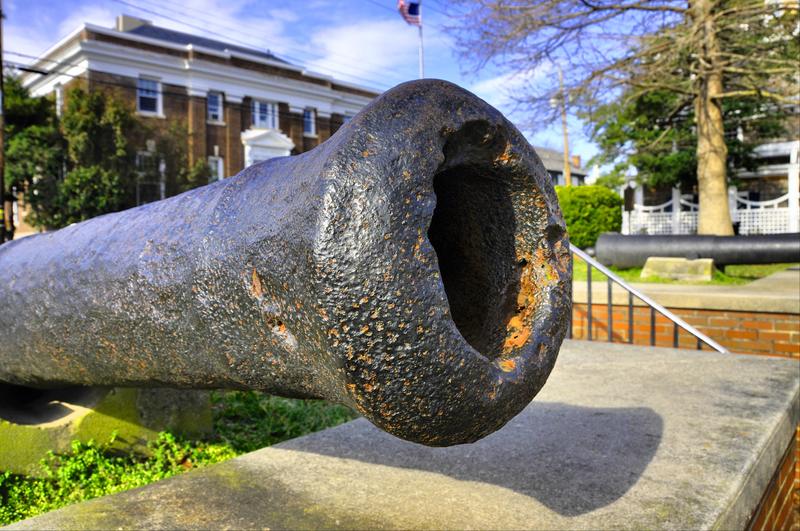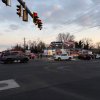Imagine standing on Front Street in downtown Lewes and having a clear, unobstructed view to the Delaware Bay.
That's what residents of “Lewistown” would have seen in 1813, when British warships bombarded the town during the War of 1812.
Lewes was a small town of several hundred residents back then, with four streets laid out the same way they are today, says Mike DiPaolo, executive director of the Lewes Historical Society. Front, Second, Third and Fourth streets were bordered by Savannah Road and Shipcarpenter Street. The land where the Lewes Historical Society Complex now stands was just outside town limits.
Connected by a dirt road not far from Lewes was Pilottown where many river and bay pilots lived.
Lewistown – also spelled Lewestown– was recovering from an economic slowdown that began in 1791 when the county seat moved from Lewistown to Georgetown, explains DiPaolo. The courts closed down, the lawyers moved inland, and merchants suffered a temporary setback from the loss of business that comes with location in the county seat “But by 1813 commerce was starting to pick up,” he said.
County seat or not, Lewistown was still the most significant town in the county, DiPaolo said, a commercial center for the region.
The British blockade of Delaware Bay, which lasted from 1813 to 1815, threatened not only the commerce of Lewes but all towns and cities that used the Delaware Bay and Delaware River as a lifeline to the outside world.
Second Street, as it is today, was the town's commercial center with many merchants' shops. A shipbuilding industry provided many jobs. “It was a maritime-based economy,” DiPaolo said. The fishing industry would come many years later.
The Lewes-Rehoboth Canal was nothing more than a creek at the time, and the harbor and canal area as we know it today did not exist. In fact, DiPaolo said, the only structures on Lewes Beach were a few shacks.
Ships coming and going from Lewes anchored northwest of the Cape Henlopen point, which offered safe refuge until construction of the first breakwater in 1828, establishing the harbor.
Sleepy Lewistown was a different town during the War of 1812. In early 1813, the federal government realized a sense of urgency to defend the Delaware Bay from Lewes north. DiPaolo said most people don't realize that during those years, the town ballooned with local and state militia and even federal troops starting in 1813. Thousands of soldiers lived in and around the town, with the main camp at Blockhouse Pond; the troops remained until the end of the war in 1815.
Two forts were active during the War of 1812: along Pilottown Road, near what is now the University of Delaware complex, and off Front Street where the 1812 Memorial Park is located. DiPaolo said the Pilottown fort was also used during the Revolutionary War and was strategically located at the “high” point of the region. The Lewistown fort was designed more to defend the town than to hurl shells at British ships in the bay, he said.
While there are no records of American ships coming to the aid of those defending Lewes and the Delaware Bay, Di Paolo said local river and bay pilots formed their own ad-hoc navy and harassed the British ships during the blockade. British ships moved north of Lewistown, but no British ship ever got as far north as Wilmington and the all-important Dupont powder works or Philadelphia.
After anchoring off Lewistown, British forces tried several times to come ashore to obtain provisions. Each time the militia was able to turn them back. Eventually, the British issued an ultimatum, and on April 6 a 22-hour bombardment began, lasting overnight into April 7.
Two days of events this weekend
Lewes will commemorate the bicentennial of the bombardment with several events this weekend:
Saturday, April 6
• 12:30 - 2:30 p.m. – The Guns of Fort McHenry at Cape Henlopen State Park, 15099 Cape Henlopen Drive, Lewes. Free and open to the public. State park fees apply.
• 12:30 - 5 p.m. –- War of 1812 presentations at St. Peter’s Church Hall, 211 Mulberry St., Lewes. Free and open to the public.
• All weekend through Labor Day- A traveling exhibit from the Naval History and Heritage Command, “War of 1812: A Nation Forged by War” will be at the Ellegood House at The Lewes Historical Society Complex at 110 Shipcarpenter St., Lewes.
Sunday, April 7
• 10 a.m. - 3 p.m. – Fort McHenry’s Musket Drill and Fife & Drum Corps at The Lewes Historical Society Complex, 110 Shipcarpenter St., Lewes. Free and open to the public.
• 4 p.m. – Rededication and commemoration of the War of 1812 at the 1812 Memorial Park on Front Street, Lewes. Free and open to the public.
• 5:30 p.m. – War of 1812 commemoration dinner at the Lewes Yacht Club. Reservations required by phoning 302-645-7670.
Full details can be found at historiclewes.org or by calling 645-7670.





















































